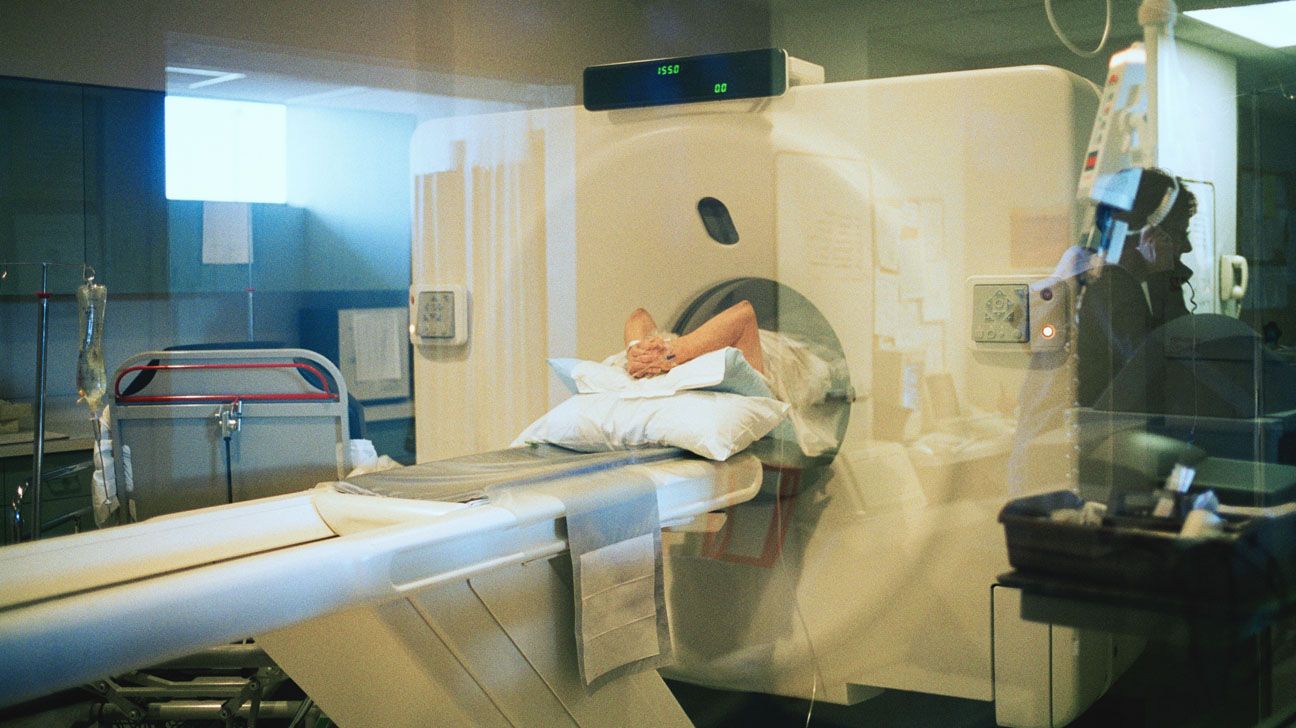Colorectal Cancer Rising In Young People: 6 Symptoms You Shouldn’t Ignore

- Real stories of young adults diagnosed with colorectal cancer highlight ongoing concern over increasing cases in adults under 50.
- Colonoscopies are the most accurate way to detect colorectal cancer, but other screening methods are sometimes used.
- Experts urge younger adults to get screened for this type of cancer, especially if they have symptoms or a family history of the disease.
Experts continue to emphasize the importance of younger adults getting screened for colorectal cancer.
The warnings come as the incidences of colon cancer and rectal cancer in younger adults have been increasing for more than a decade.
The American Cancer Society (ACS) reports there will be about 107,000 new cases of colon cancer in the United States in 2025. About 47,000 new cases of rectal cancer are also predicted to be diagnosed in 2025. The incidences are slightly higher for males than they are for females.
The ACS notes that the overall rate of colorectal cancer diagnoses in the United States has declined by about 1% every year between 2012 and 2021. They credit an increase in screenings and changes in lifestyle-related risk factors.
However, the ACS reports that the rate of colorectal cancer in people under 50 in the United States rose more than 2% per year from 2012 to 2021.
The organization adds that the death rate for colorectal cancer has been increasing in younger adults by about 1% per year for the past two decades despite an overall decrease in the disease’s death rate.
Experts aren’t certain what is driving these increases, but they say diet, particularly red and processed meat, and other lifestyle habits may be factors.
The evidence of the rise in colorectal cancer cases isn’t just in statistics. There are also the recent stories from younger adults who have received unexpected colorectal cancer diagnoses.
Stories of early-onset colon cancer highlight importance of screening
An Arkansas woman reportedly lied to her doctors about her gastrointestinal symptoms to get a colonoscopy.
Sydney Stoner said her doctors dismissed her severe abdominal pain in 2019, so she fabricated a story that she had discovered blood in her stools.
A colonoscopy was ordered, and it revealed Stoner, who was 27 at the time, had stage 4 colon cancer. Stoner’s cancer is now “stable” after four years of treatment.
In 2022, a Nebraska woman was diagnosed with stage 3 colon cancer at 48 after her first colonoscopy. Angelica McFall shared that she had no symptoms and no family history of colorectal cancer.
McFall was treated for the disease and is now cancer-free. She is spreading the word about younger adults getting screened.
Last month, William Lindley told Healthline he thought he had irritable bowel syndrome (IBS) due to persistent stomach problems when he was 38.
A colonoscopy, however, revealed he had stage 4 colon cancer. After several surgeries and chemotherapy treatments, Lindley is now moving on with his life. He urges younger adults not to downplay gastrointestinal symptoms.
Colon cancer is treatable when caught early
Experts note that colorectal cancer can be successfully treated if caught in its early stages.
However, it can be difficult to treat if it isn’t detected until its later stages.
They also note that many times colorectal cancer does not produce any symptoms until those later stages.
Hence, they say, the importance of regular screenings, even at a younger age.
The current recommendations call for men and women to start being tested for colorectal cancer at age 45. In addition, screenings may be required before 45 if a person has a family history of colorectal cancer or has certain medical conditions such as inflammatory bowel disease (IBD).
It’s recommended that colonoscopy screenings be done every 10 years for people with no family history of the disease and no polyps discovered during the exam. The time between tests can be shorter for other patients.
“Getting regular screenings for colorectal cancer are extremely important to prevention and early detection of colorectal cancer,” Cindy Kin, MD, an associate professor of surgery at Stanford Health Care in California, told Healthline. “Most polyps and cancers are not symptomatic, so don’t wait for symptoms before getting checked out.”
Katherine Van Loon, MD, a gastrointestinal oncologist at the University of California San Francisco, said it’s “important to raise awareness” among younger adults about colorectal cancer screenings.
“This is a cancer that is entirely curable it we catch it early,” she told Healthline.
Van Loon urges younger adults to not assume they won’t develop the disease because they are under the age of 50.
“It’s important to pay attention to your body and be prepared to self-advocate,” she said.
Van Loon adds that medical professionals also need to be aware of the rising incidence of colorectal cancer in younger people.
“We have to be attentive to what our patients are telling us,” she said.
Babak Firoozi, MD, a gastroenterologist at MemorialCare Orange Coast Medical Center in California, agrees.
“Any concerning symptoms should be addressed, regardless of age. Colon cancer is rising in younger people for unknown reasons,” he told Healthline. “Any changes in bowel habits, unexplained abdominal pain, weight loss, or blood in the stool should be evaluated regardless of age.”
Anton Bilchik, MD, a surgical oncologist as well as chief of medicine and director of the Gastrointestinal and Hepatobiliary Program at Providence Saint John’s Cancer Institute in California, also urges medical professionals to be thorough with younger patients.
“Colon cancer is a young person’s disease,” he told Healthline. “Therefore, it is important to consider colon cancer in the differential diagnosis when a patient reports with unexpected weight loss, change in bowel function, or blood in the stool.”
Types of colorectal cancer tests
There is an array of exams that can be given to screen for colorectal cancer.
A variety of stool tests, including those that can be self-administered at home, look for blood and other components that may indicate the presence of cancer.
Experts note that these tests should be done on an annual basis. They also point out that these exams do not reveal exactly where cancerous tissues or tumors are located. A more invasive test, such as a colonoscopy, needs to be done as a follow-up to locate the cancer.
In addition, the Food and Drug Administration (FDA) in 2024 approved a new blood test to help diagnose colorectal rectal cancer.
A computed tomography (CT) scan can also be used to seek out cancerous tissue, but experts say this exam may not detect smaller lesions.
The gold standard for colorectal cancer screening is the colonoscopy.
This procedure involves inserting a thin, flexible tube with a light and camera up the rectum after a person has prepped for the exam by taking medication the day before that cleans out the bowels.
Experts say colonoscopies are more accurate than other tests in detecting cancerous tissue. They also note that a doctor can remove polyps during the procedure.
“The other benefit that colonoscopies have compared to other screening tests is that they can actually prevent cancer from forming,” said Kin. “When we see a polyp during a colonoscopy, we remove it at that moment, thus preventing that polyp from ever growing into a cancer.”
Experts acknowledge that many people are reluctant to undergo colonoscopies because they are invasive and inconvenient, but they point out they are best way to detect this type of cancer.
“Colonoscopy is the gold standard and has been shown to significantly reduce the risk of getting colon cancer,” said Firoozi.
What to know about colorectal cancer
Colorectal cancer (CRC) is the third most common type of cancer among males and females in the United States.
A 2025 report notes that CRC is the third-leading cause of cancer-related death in males and the fourth-leading cause of cancer-related death in females.
The cancer usually starts in the colon or rectum and can spread to other parts of the body.
The cancer, in many instances, starts as a growth, or polyp, in the colon. These growths are usually benign or noncancerous but can become cancerous if untreated.
Symptoms usually don’t develop until the later stages of the disease. Six key symptoms include:
- change in bowel habits
- diarrhea
- constipation
- blood in the stool
- cramping or abdominal pain
- unexplained weight loss
Treatments for colorectal cancer include:
- surgery
- chemotherapy
- targeted drug therapy
“Colorectal cancer is on the rise in young people, and it can be quite aggressive,” said Kin. “Early detection is key. We don’t want people assuming that their symptoms are just indigestion or constipation or hemorrhoids — advocate for yourself and get checked.”
Colorectal Cancer Rising In Young People: 6 Symptoms You Shouldn’t Ignore Read More »





